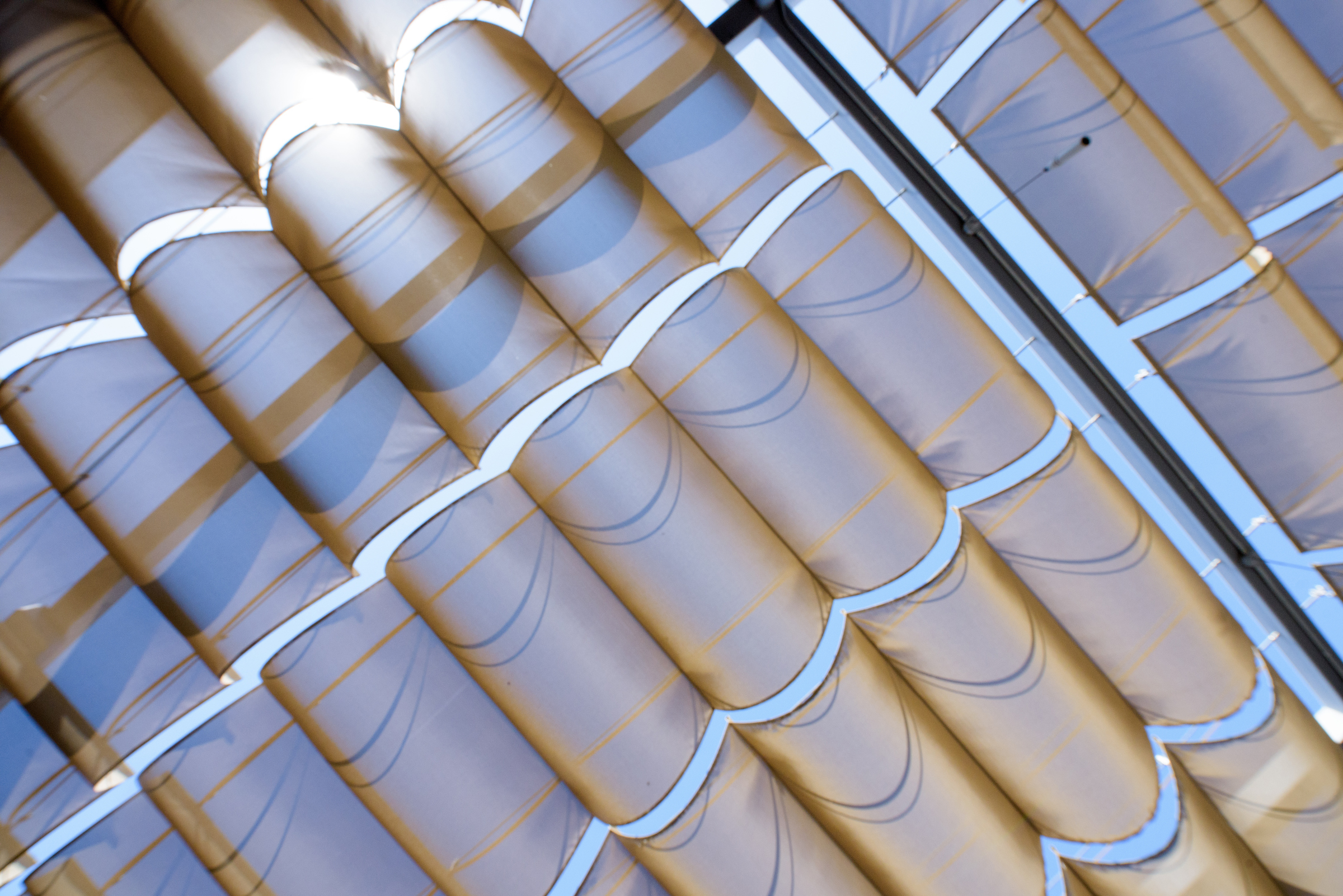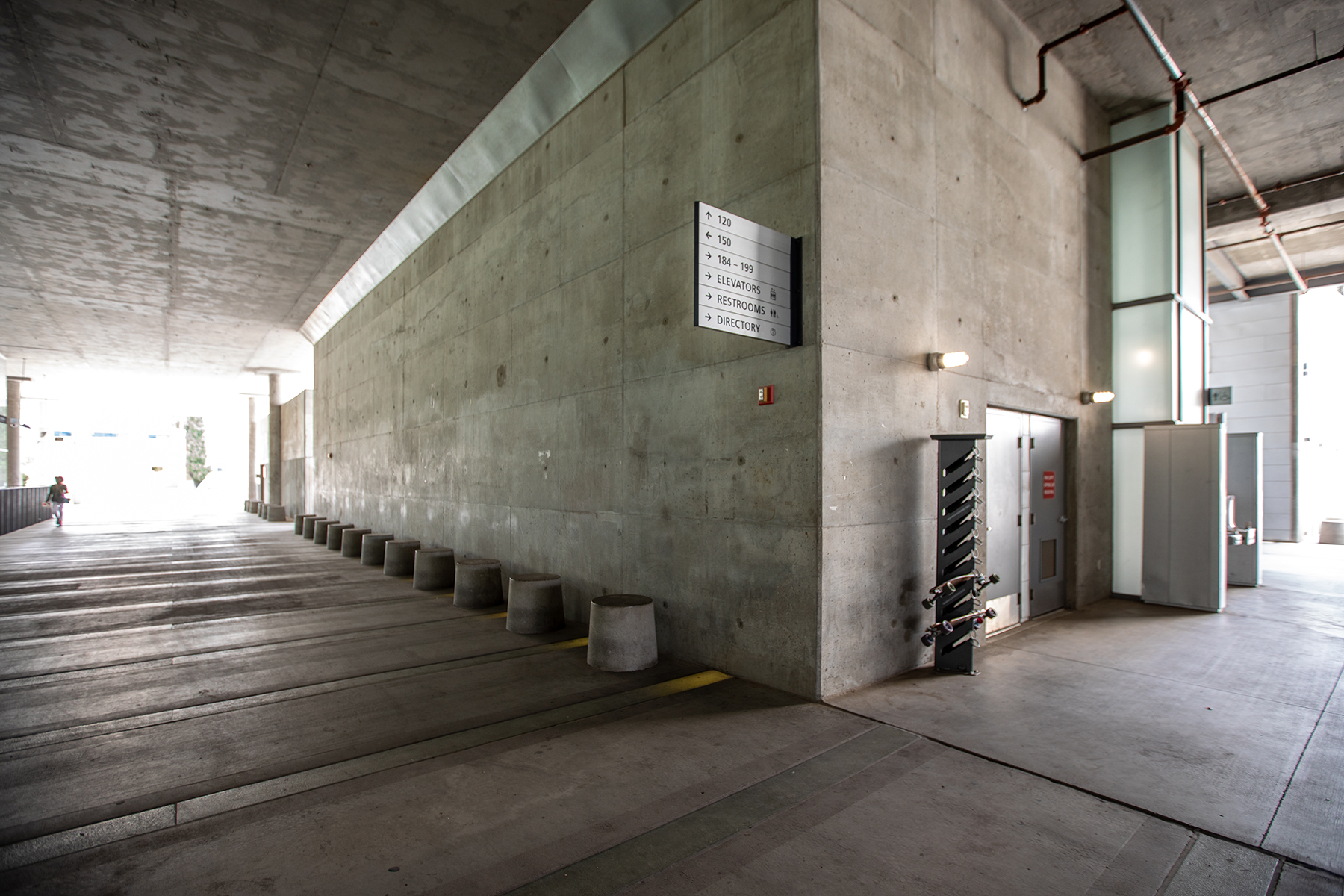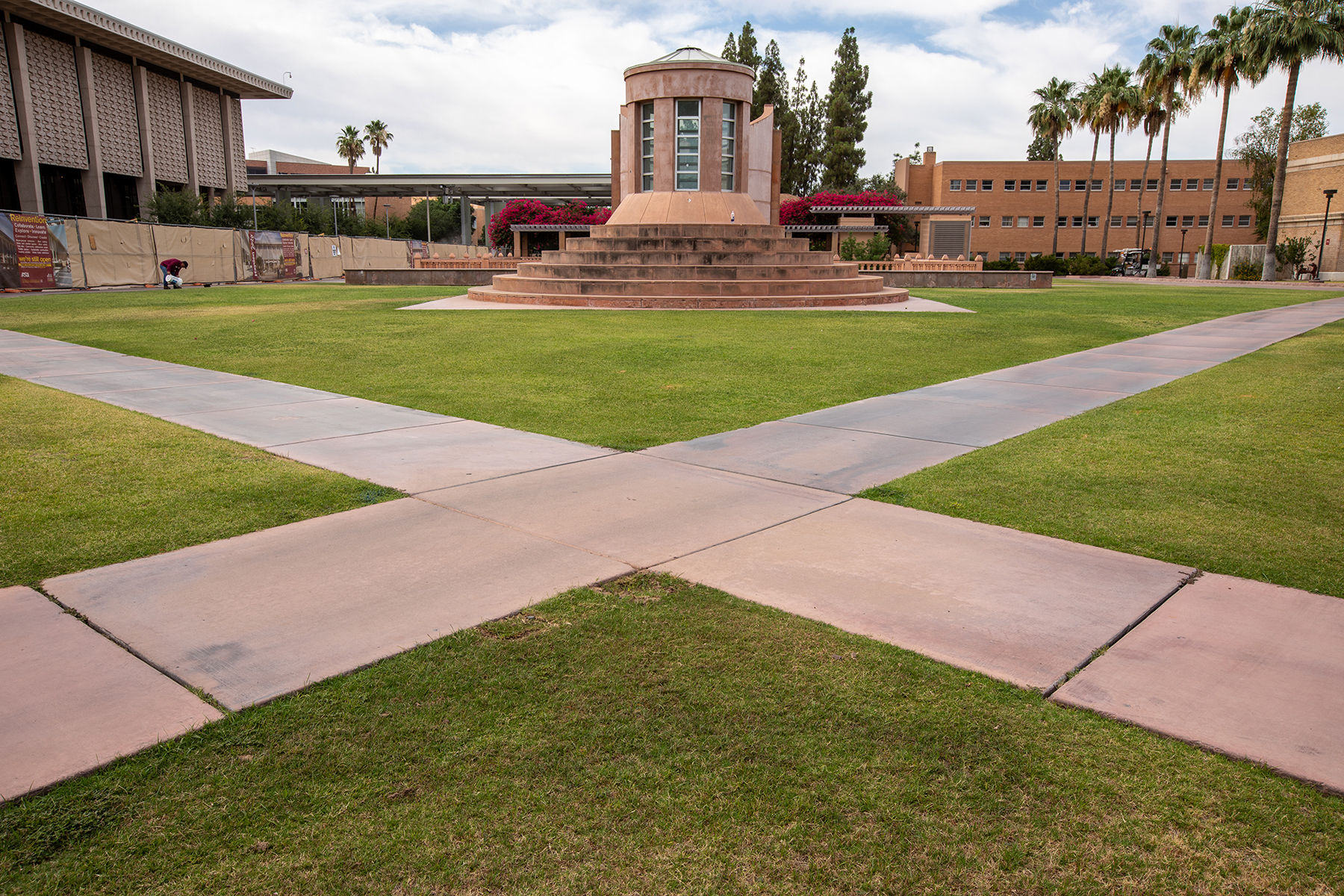Arizona State University’s fall semester has just begun, and that usually means three things: Students are back on campus, professors are honing their lesson plans and extreme heat will linger for a few months.
On a sweltering hot day under the Arizona sun, triple-digit temperatures are usually the norm. The combination of rising temperatures, longer summers and the urban heat island effect means you won’t be spending much time outside during the day. And if you do, you’ll quickly understand how comforting shade can be — and how wise it is to find it.
“The sun here is so much more intense than other places because we’re closer to the equator,” said Ariane Middel, an urban climatologistMiddel is also a Senior Sustainability Scientist in the Global Institute of Sustainability and Innovation and an assistant professor in the School of Arts, Media and Engineering at Herberger Institute for Design and the Arts. who is the director of The SHaDE Lab, an urban climate research group based at ASU. “We’re also in the desert. That means you have to constantly be aware of the heat if you go outside and take measures to protect yourself.”
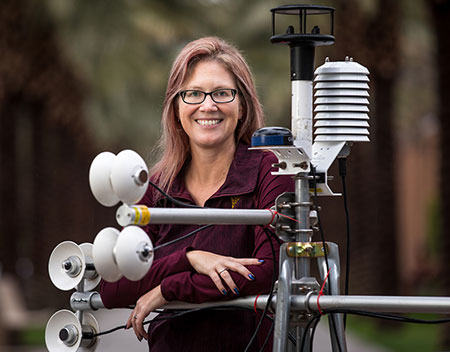
Assistant Professor Ariane Middel poses with one of her MaRTy carts, mobile units that measure the total radiation that hits the body, including sunlight and the heat emitted from surfaces like asphalt. Photo by Charlie Leight/ASU News
Middel and her associates conducted a three-year study of the Tempe campus, mapping out the best spots to avoid and stay cool. She believes pedestrians are more likely to experience more extreme heat in the coming decades and that finding strategies to deal with soaring temperatures is vital.
Middel is one of several world class researchers at ASU who studies the impact of heat. David Hondula, an assistant professor in the School of Geographical Sciences and Urban Planning and a member of ASU’s Urban Climate Research Center specializes in climate change, urban sprawl and public health impacts of extreme heat. Jennifer Vanos, an assistant professor in ASU's School of Sustainability and College of Global Futures, focuses on extreme heat, thermal comfort and air pollution in her research, and examines health impacts on vulnerable populations, such as children and athletes.
Hondula said the design and construction of cities can impact local climate, which is why Valley summers are getting warmer and extending further into the school year.
"For folks coming back to campus who live in Arizona, and especially for students who are coming to our state from other parts of the country, Arizona heat is not to be taken lightly," Hondula said. "We all need to be prepared for a period of adjustment. We really need to be looking out for ourselves and looking out for one another."
Hondula added that extreme heat is a health risk and is responsible for thousands of hospitalizations every year and hundreds of deaths.
The period of adjustment Hondula referred to really means getting acclimated to the heat, said Vanos.
"Heat acclimatization and being prepared with appropriate attire, hydration and heat plans is essential to minimize the risk of heat illness, especially for anyone performing physical activities outdoors and for young children," Vanos said. She added that students should acclimate themselves before considering rigorous activities such as a mountain hike or a long bike ride, and that medications and stimulants such as caffeine can affect heat tolerance.
Here are a few tips from our experts on how and where to stay cool for school:
Shade is your friend
When you have to go outdoors, remember that shade is crucial. On the Tempe campus, there’s plenty of shade in and around the Memorial Union, a popular gathering spot to eat and visit. That comes courtesy of the shade sails, awnings or building overhangs that ASU constructed, vital to creating pedestrian-friendly outdoor spaces in desert cities. Natural shade such as trees can also offer a respite from the heat.
Shade sails such as these outside of the Memorial Union provide relief from the head.
If you can’t find shade, bring your own
Personal items such as hats, umbrellas, sunglasses and lightweight clothing can provide all types of shade for the body, which can protect you from the sun’s rays while keeping you cool.
Water is life
Always try to carry a refillable water bottle with you in order to stay hydrated. ASU offers plenty of water fountains across its campuses for refilling containers. The Institute of Medicine recommends that men should drink at least 101 ounces of water (nearly 13 cups) a day, while women should consume a minimum of 74 ounces (about 9 cups). Physical activities such as running, hiking or biking require the individual to drink more water according to our experts.
Use sunscreen
This one isn't strictly about staying cool, but it is super important. Sunscreen isn’t just meant to be used at the beach or a pool area. It does have a practical application beyond the water. Exposing your skin to the sun for long amounts of time is not only bad for wrinkles, but it can often lead to skin cancer.
The three coolest spots on the Tempe campus
According to Middel's team:
1) The breezeway at Coor Hall.
2) Under the trees on the Old Main lawn.
3) Under the giant ficus tree just west of the Memorial Union.
The breezeway at Coor Hall. Photo by Charlie Leight/ASU News
The three hottest spots on the Tempe campus
1) At the center of the “X” sidewalks on Hayden Lawn.
2) The walkway between Coor and Payne halls.
3) The intersection of Cady and Tyler malls.
Information provided by The SHaDE Lab
The "X" on Hayden Lawn. Photo by Charlie Leight/ASU News
Top photo illustration courtesy of Detry26/iStock
More Health and medicine

ASU's Roybal Center aims to give older adults experiencing cognitive decline more independence
For older people living alone and suffering from cognitive decline, life can be an unsettling and sometimes scary experience.Arizona State University is out to improve that experience.Two projects…

Dynamic data duo advances health research
The latest health research promises futuristic treatments, from cancer vaccines to bioengineered organs for transplants to medical nanobots. While these technologies may one day be…
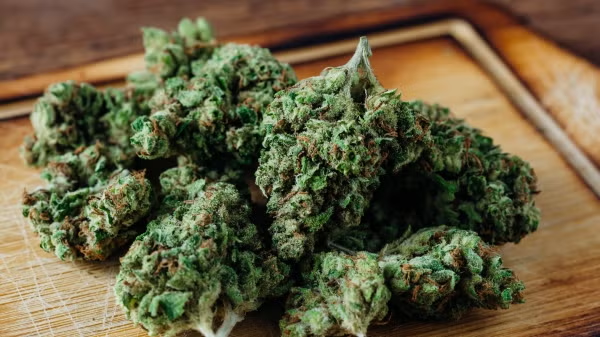
New study reveals high levels of toxins in seized cannabis from Arizona and California
A recent study conducted by researchers from Arizona State University has uncovered alarming levels of Fusarium mycotoxins in illicit cannabis samples seized in Arizona and California.The study found…



